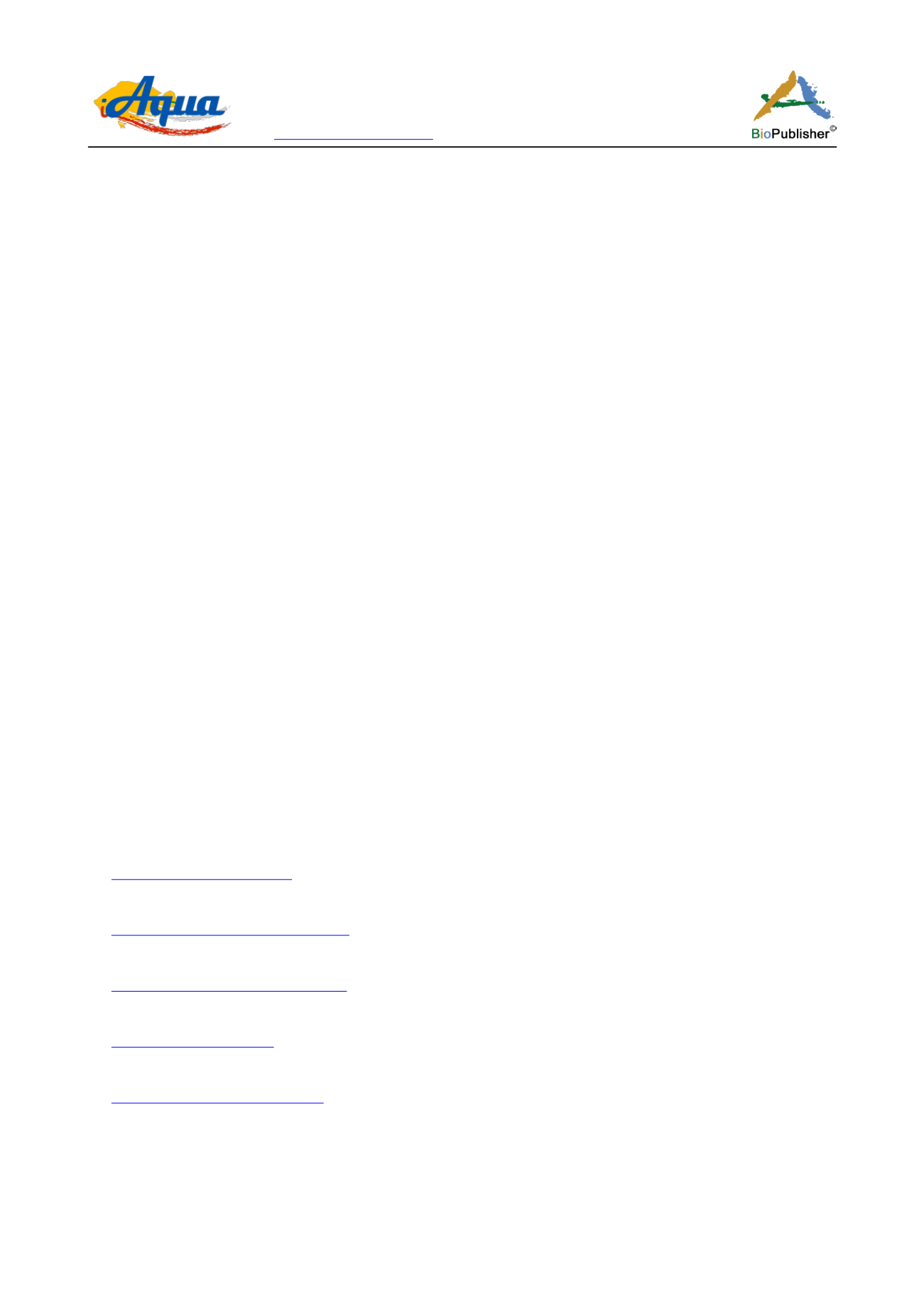
International Journal of Aquaculture, 2016, Vol.6, No.19, 1
-
8
6
Operational Land Imager (OLI)/ Thermal Infrared Sensor (TIRS), Advanced Spaceborne Thermal Emission and
Reflection Radiometer (ASTER), Indian Remote Sensing (IRS-P6) - Linear Imaging Self Scanning Sensor
(LISS)-III, ChinaeBrazil Earth Resources Satellite (CBERS)-3/4 and Sentinel- 2A that contains more than 3
spectral bands. In addition, there is a package known as WebGIS which unlike the conventional GIS package
makes distributed geographic (DGI) available to a larger number of audiences.
Also, the use of these technologies could be further used in aquaculture as it has been employed to greater success
in other fields of agriculture. In addition to the above opportunities, technological advancements have resulted in
an increase in the number of observation platforms and sensor capabilities (e.g., spectral and spatial resolution)
(Rajitha et al., 2007) which when applied in aquaculture could help improve production as well as ensuring
environmentally friendly aquaculture.
Despite these opportunities presented by the use of remote sensing, GIS and GPS come with its own challenges.
For instance the assessment of aquaculture sites, the spatial resolution of satellite sensors is a clear limiting factor
for the identification of single aquaculture facilities (e.g. ponds, cages) which have generally quite small, simple
geometric forms (Ottinger et al., 2016). Also cloud cover limits the timeliness of data acquisition and the
availability of time series data from optical sensors and is a major issue in tropical regions which host most of the
global aquaculture area (Ottinger et al., 2016).
5 Conclusion and recommendation
The above studies reviewed in almost all cases concluded that remote sensing and GPS have played important
roles in site selection, planning and monitoring aquaculture. Clearly the increasing importance and use of remote
sensing and GIS in aquaculture is a global phenomenon. We document that the use of remote sensing and GIS has
gone a long way to help the development of aquaculture worldwide over the past decade. In recent years, there has
been growing concerns about the adverse effects of diseases in the aquaculture of many economically important
marine and fresh-water fish species
,
retarding growth of the industry. We recommend that much more studies be
conducted in the use of modern approaches in investigating diseases in aquaculture. Also, we recommend that
funds from stakeholders be made available for the use of remote sensing and GIS in the aquaculture industry.
Conflict of interest
The authors have declared that there is no conflict of interests for this paper.
References
Aguilar-Manjarrez J., and Ross L.G., 1995a, Geographical information systems (GIS) environmental models for aquaculture development in sinaloa state,
Mexico,
Aquaculture International
, 3(2), 103–115
Arnold W.S., White M.W., Norris H.A., and Berrigan M.E., 2000, Hard clam (Mercenaria spp.) aquaculture in Florida, USA: geographic information system
applications to lease site selection,
Aquacultural Engineering
, 23(1), 203-231
Bacher C., Grant J., Hawkins A.J.S., Fang J., Zhu M., and Besnard M., 2003, Modelling the effect of food depletion on scallop growth in Sungo Bay (China),
Aquatic Living Resources
, 16(1), 10–24
Bengil F., and Bizsel K.C., 2014, Assessing the impact of aquaculture farms using remote sensing: an empirical neural network algorithm for Ildırı Bay, Turkey,
Aquaculture Environment Interactions, 6(1), 67-79
Buitrago J., Rada M., Hernandez H., and Buitrago E., 2005 A single-use site selection technique, using GIS, for aquaculture planning: choosing locations for
mangrove oyster raft culture in Margarita Island, Venezuela, Environ Manage, 35, 544–556
PMid:15886953
Burrough P.A.,1986, Principles of geographic information systems for land resources assessment, Oxford University Press, New York
Dahdouh-Guebas F., Zetterstrom T., Ronnback P., Troell M., Wickramasinghe A., and Koedam N., 2002, Recent changes in land use in the Pambala-Chilaw
Lagoon complex (Sri Lanka) investigated using remote sensing and GIS: conservation of mangroves vs. development of shrimp farming, Environ Dev
Sustain 4,185-200


